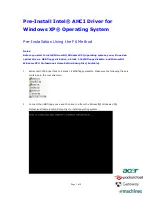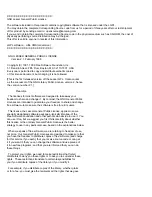
Advanced Configuration 65
Web Forwards
The flexibility of user attributes also means they can be used in Web Forwards. An example being a
support case tracking application which requires a form to authenticate users.
A standard username attribute cannot be used as the FORM has a drop-down list for User as opposed
to a text field.
So here a user attribute is defined which specifies the associated user’s ID. Two new attributes are
defined which are confidential to the user only and specify the username Id (e.g. 'supportID') for the
user and their password (e.g. 'supportPassword').
When the Web Forward is configured, the attributes are added to the authentication parameters.
Browse to Manage System > Resources > Web Forwards and select the Edit action for the required
Web Forward. In the Authentication section click the ${} button next to the Form Parameters field
and select 'userAttributes:supportID' from the list; add it to form Parameters. Repeat for
'userAttributes:supportPassword'.
When the Web forward is executed the supportId and supportPassword attributes are submitted
during authentication into the Web site. The FORM object takes the supportId and identifies the
username then takes the supportPassword as the associated password.
Instantly any user is able to access the support Web site using their credentials and this single Web
Forward.
Types of Attributes
The examples above all show the use of the user attribute where the attribute is assigned through the
${attr:attributeName}
command. There is also another attribute type called Policy Attribute.
Unlike the user attribute which is assigned to each user this is assigned to a policy and is referenced
by the
${policyAttributes:examplevncHostname}
variable.
Policy attributes, once set, are set for all users under the assigned policy. So a resource can be
executed under a different policy and have a different value for each policy.
How to use Attributes
Once a user attribute has been created it can be used throughout the system. Wherever dynamic
information can be loaded, user attributes can be used.
A user attribute is referenced via the
attr
command whilst a policy attribute is referenced by the
policyAttr
command. Below an example demonstrates how to set up a Network Place using user
attributes.
Summary of Contents for SSL VPN
Page 8: ...viii Barracuda SSL VPN Administrator s Guide...
Page 34: ...34 Barracuda SSL VPN Administrator s Guide...
Page 76: ...76 Barracuda SSL VPN Administrator s Guide...
Page 94: ...94 Barracuda SSL VPN Administrator s Guide...
Page 98: ...98 Barracuda SSL VPN Administrator s Guide...
Page 104: ...104 Barracuda SSL VPN Administrator s Guide...
















































